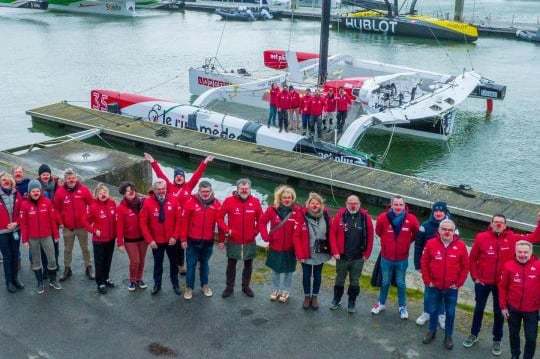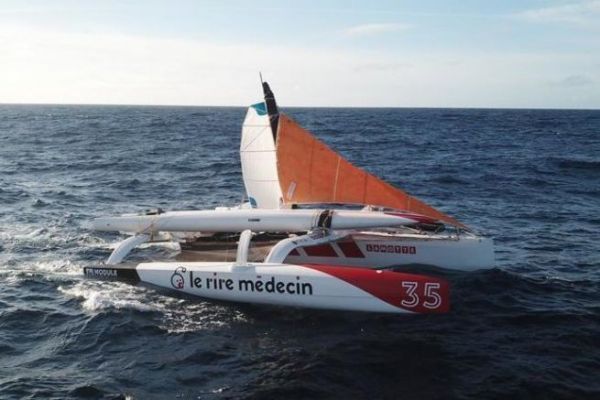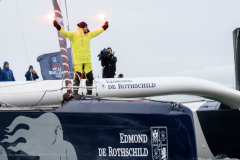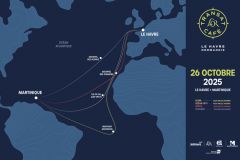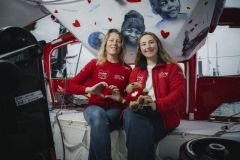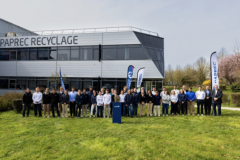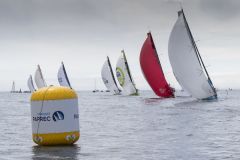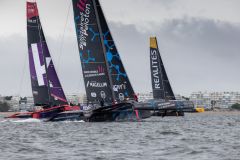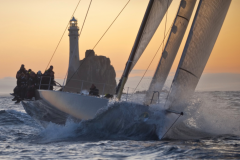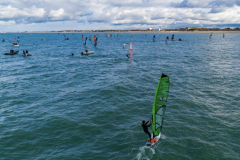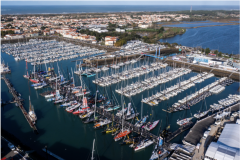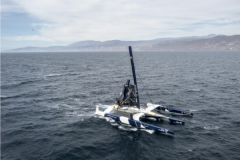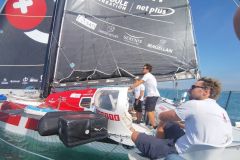Off the Iberian Peninsula, shortly after the start of the second leg of the Transat Jacques Vabre, Luke Berry dismasted and suffered serious damage to his trimaran Le Rire Medecin Lamotte. Now back from a trip under jury rig, he tells us all about his adventure and his explanations.
Tell us about the conditions of your damage. Has the cause been identified?
We still don't know why it broke. The front arm broke and immediately dismasted the boat. It happened in 25-30 knots, so not too much wind, but big waves. We were under 2 reefs in the mainsail, with J3 up front. We were a bit down, but we were going pretty fast.
It's a good thing the mast fell, or we'd have capsized.
I was resting under the cap when it happened, and Antoine Joubert, my co-skipper, shouted that we'd dismasted. We didn't realize right away that the float had gone. The stress built up quite quickly. We went from a racing mindset to the need to bring the boat in.
We made the various pieces as secure as possible, while keeping dangerous elements away from the central hull. We called race management, then contacted Adrien Hardy on his assistance trimaran Merida, who was in the vicinity. He arrived two hours after the damage, which is very fast.
How did the rescue operation go?
The Merida arrived at night, and we waited until sunrise to start operations. I salute the ingenuity and commitment of Adrien's team. They were all in the same frame of mind as us, i.e. to save as many elements as possible.
The float was held in place solely by the remains of the trampoline, which had to be cut away. The mast was a problem, as it was half-submerged. Adrien dived in a tank to a depth of 3 meters to attach an inflatable balloon to the masthead with a hoist.
We gradually pulled all the sails out of the water. With 7 m of mast left in the water, the team lifted the rail cars axle by axle to separate the mainsail from the mast.
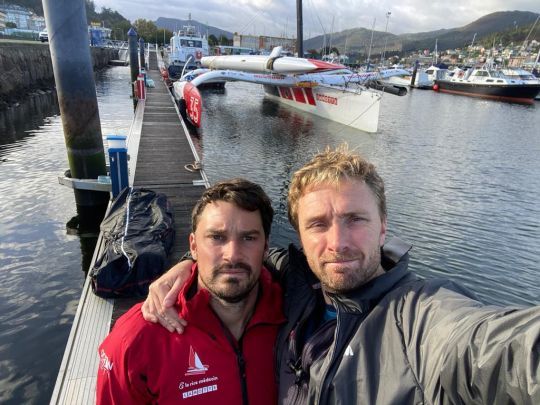
We had to move fast, as a big low-pressure system was bearing down on us. We headed for the coast with the Merida in tow, towing our own float. We arrived at night in a port called Viveiro, which we didn't know at all. We had a good soup on the Merida, before a short night's rest.
How did you prepare for the return trip with a trimaran missing a float?
The next day, we went to the harbor master's office to tell them about our problems. They were extremely welcoming. They brought in an antique truck crane to help us.
We checked with the architects where to position it, and secured the float to the boat. We balanced the weights to ensure that the prao could sail on both sides.
A makeshift rig was then assembled from the remaining spars. A piece of mast was attached to the amputated arms to maintain rigidity. Care was taken to plug the ends of the arms, which communicate directly with the central hull. Then we waited for an ideal weather window.
At the same time, we provided assistance to several crews still racing, to help them solve their problems. For us, the race was over, but it felt good to support sailors who could still reach Martinique.
What was it like sailing on a trimaran transformed into a prao?
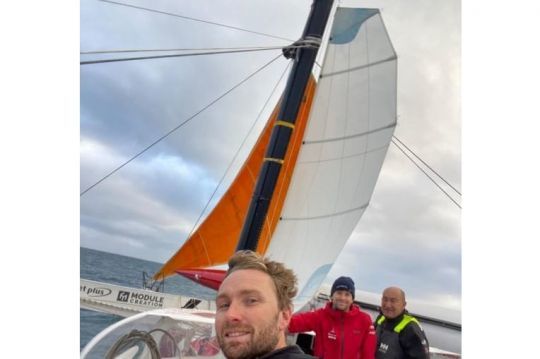
We set off with a crew of three sailors. As soon as we left port, we sent out all the sails we could, namely a Hobbie Cat 15 mainsail, another Mini-transat mainsail, and our J3 mounted upside down. We got shaken around a bit, but the boat reacted well.
Downwind, it worked well. We got up to 25-30 knots, and our trimaran, transformed into a prao, peaked at 12 knots.
In the calmer phases, we leaned on the engine. But it was very noisy, because the 30-horsepower engine of a racing trimaran is not at all soundproof.
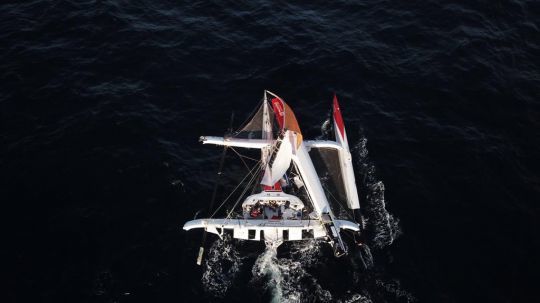
Arriving at the tip of Brittany, we passed the Occidentale de Sein, which shook us up again. Then, after three days at sea, we reached the port of Saint-Malo.
What happens next?
We're going to take the boat out to inspect the structure. We have two things to do. We need to understand the origins of the damage, and verify its extent. We'll be working hand in hand with the architects and the composite team. Our boats are not insured for such damage, so we're going to have to find solutions to get the work underway.
Of course, we're disappointed not to have finished the Jacques Vabre. But that's only a tiny part of our year's sailing. We didn't finish the last 8 days, but there were 3 of us who did e at the time of the breakage, and we arrived 2 e of the first leg. The results were there all season long, and we got 450 people out on the water. We already have 25 partners united around a cause, and we hope to be back on the water very soon to defend it.
